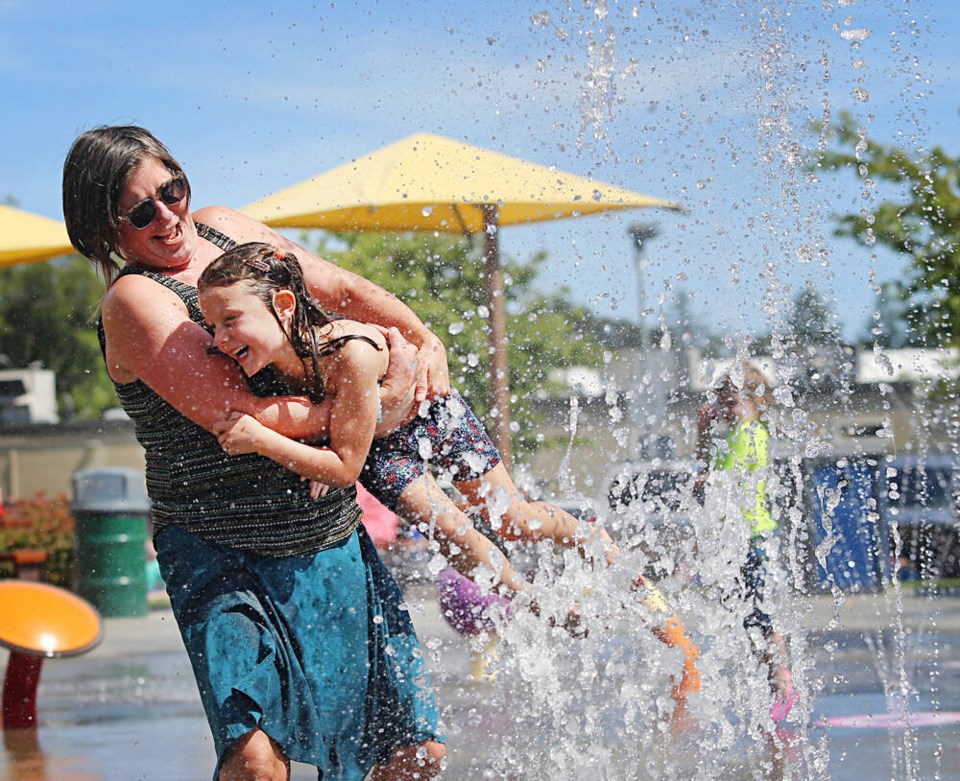As B.C.’s south coast enters a week of high heat, the most important work of the day may simply be the work of staying cool.
A heat warning for Greater Victoria, the Southern Gulf Islands, East Vancouver Island from Duncan to Campbell River shows temperatures ranging from 29 to 31 C. In Port Alberni, temperatures are expected to remain in the low-to-mid 30s all week.
Warnings in place for Metro Vancouver, the Sunshine Coast, Howe Sound, the Fraser Valley and Fraser Canyon show temperatures ranging from the high 20s in coastal regions, to the mid 30s inland.
Indoors, any sustained temperatures over 26 C (78 F) can increase health risks; those risks significantly increase at indoor temperatures over 31 C (88 F).
During the deadly heat dome that occurred from June 25 to July 1, 2021, 98 per cent of B.C.’s 619 heat-related deaths occurred indoors.
Health risks increase as the body uses more of its resources trying to stay cool, said Michael Brauer, a professor at the University of B.C.’s school of population and public health.
“The body tries keep our core body temperature constant, it has to be about 37 degrees,” Brauer said. “When we get higher external temperatures, we do that by sweating. As we get older, the body’s ability to sweat and remove heat becomes more difficult.”
Extreme heat can be especially dangerous for those with chronic disease or underlying conditions that affect circulation, such as kidney disease, heart disease and diabetes; schizophrenia and mental illness is another risk factor.
“In extreme heat our body is really focused on removing that heat, it senses an external challenge and shifts its energy to dealing with that,” Bauer said.
Heat exhaustion, characterized by symptoms such as heavy sweating, nausea, headache weakness and muscle cramps can set in when the body reaches a temperature of 40 C. At temperatures above 40 C, heat stroke, a life-threatening emergency, can occur.
There are a few things working in our favour with this heat wave, Brauer said. “The heat dome in 2021 was really devastating because it came so early in the summer,” he said. “A warm day in June is really different from a warm day in August.”
It’s not simply that we’ve had a few more weeks to acclimatize to the warmer temperatures summer brings, but the days are getting shorter. Longer nights mean more time to cool our bodies and our homes.
Brauer recommended placing fans near open windows and doors to bring cool air in at night. “If it’s too warm to sleep, sleep is compromised and that affects health and decision-making,” he said. “In extreme heat, blood flow to your brain may be impacted.”
Brauer also recommends being more cautious with alcohol or any substance use. “Substances can have a more profound effect on the body — you need to slow down and just let your body work on keeping you cool.”
Vancouver Coastal and Fraser Health recommend keeping windows, curtains and blinds closed during the day, drinking plenty of water, using air conditioning if you have it, and monitoring indoor temperatures to ensure they do not go above 31 C.
— With a file from The Canadian Press and the Times Colonist



